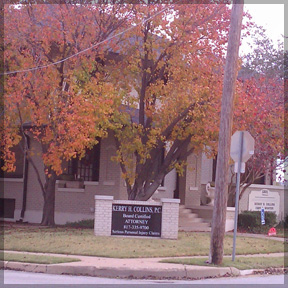Texas Personal Injury: The Risk Of Accidents At Intersections
Intersection accidents are common causes of motor vehicle accidents in Texas and the U.S.
If you think about the simple reason for an intersection – that two or more paths need to cross each other safely – it is not surprising that road intersections are frequently the sites of motor vehicle accidents involving cars, trucks, buses, trains, motorcycles, bicycles and pedestrians.
At an intersection, traffic laws control the flow of traffic in a way designed to get everyone through the crossing safely, whether the intersection design involves lights, stop signs or is uncontrolled. But when something goes wrong, what was supposed to have been a safe crossing or turn can become a dangerous, even deadly, intersection accident.
Federal Highway Administration
The Federal Highway Administration calls intersections “safety challenges” and “planned points of conflict,” noting that in recent years about one-fifth of traffic deaths and about half of traffic-related serious injuries were related to intersections. The FHWA says that intersection safety strategies must involve a combination of engineering, education and enforcement.
The agency has extensive information about intersection safety publicly available on its website, which reveals that typical types of crashes at intersections both controlled by signals and uncontrolled include right angle, rear end, left turn, sideswipe, and pedestrian or bicycle.
Texas intersection statistics
On a local note, according to the Texas Department of Transportation, 767 people died in intersection accidents in 2013, roughly 2 people on average in the state every day.
Intersections are mentally challenging to drivers
The Virginia Transportation Research Council points out that intersections are among “the most complex situations that drivers encounter because of their many conflict points,” considering that drivers must pay attention simultaneously to lanes, signs, signals, road marking, other vehicles, pedestrians and bicyclists, and respond with appropriate speed and position. The council concludes that this “heavy cognitive burden” contributes to intersection accidents.
Every driver has the responsibility when approaching an intersection to take this cognitive burden seriously and drive without distraction. He or she must keep others safe by paying full attention to all these factors and respond according to the traffic laws and with due care. When failure to do so causes an accident with property damage, injury or death, the driver may not only have violated criminal laws, but also acted with negligence that could open him or her up to civil liability in a personal injury lawsuit.
Red-light running
One dangerous driving behavior everyone sees at intersections is the running of red lights. FHWA reports that about 165,000 people are hurt yearly by drivers who run red lights, meaning entering an intersection after the light has turned red, often in an attempt to beat the light by speeding up.
Of course, running a red light negligently or recklessly violates not only traffic laws, but also the duty of care every driver owes to others to behave reasonably and responsibly to prevent accidents.
Texas law allows some governmental units like municipalities to install red light cameras that trigger when their sensors detect cars entering intersections after lights have changed to red. Drivers identified through this program receive fines. According to TXDOT, red light cameras are deterrents to red light runners both because of the fines and because drivers may see signs that the cameras are present.
Seek legal counsel after an intersection accident
Any Texan hurt in an intersection accident involving someone else’s negligence should speak as early as possible with an experienced personal injury lawyer for legal advice, a private investigation and preservation of legal rights, including a possible personal injury or wrongful death lawsuit.
Keywords: Texas, intersection accident, motor vehicle accident, Federal Highway Administration, wrongful death, personal injury, negligence, recklessness, red-light running, camera



